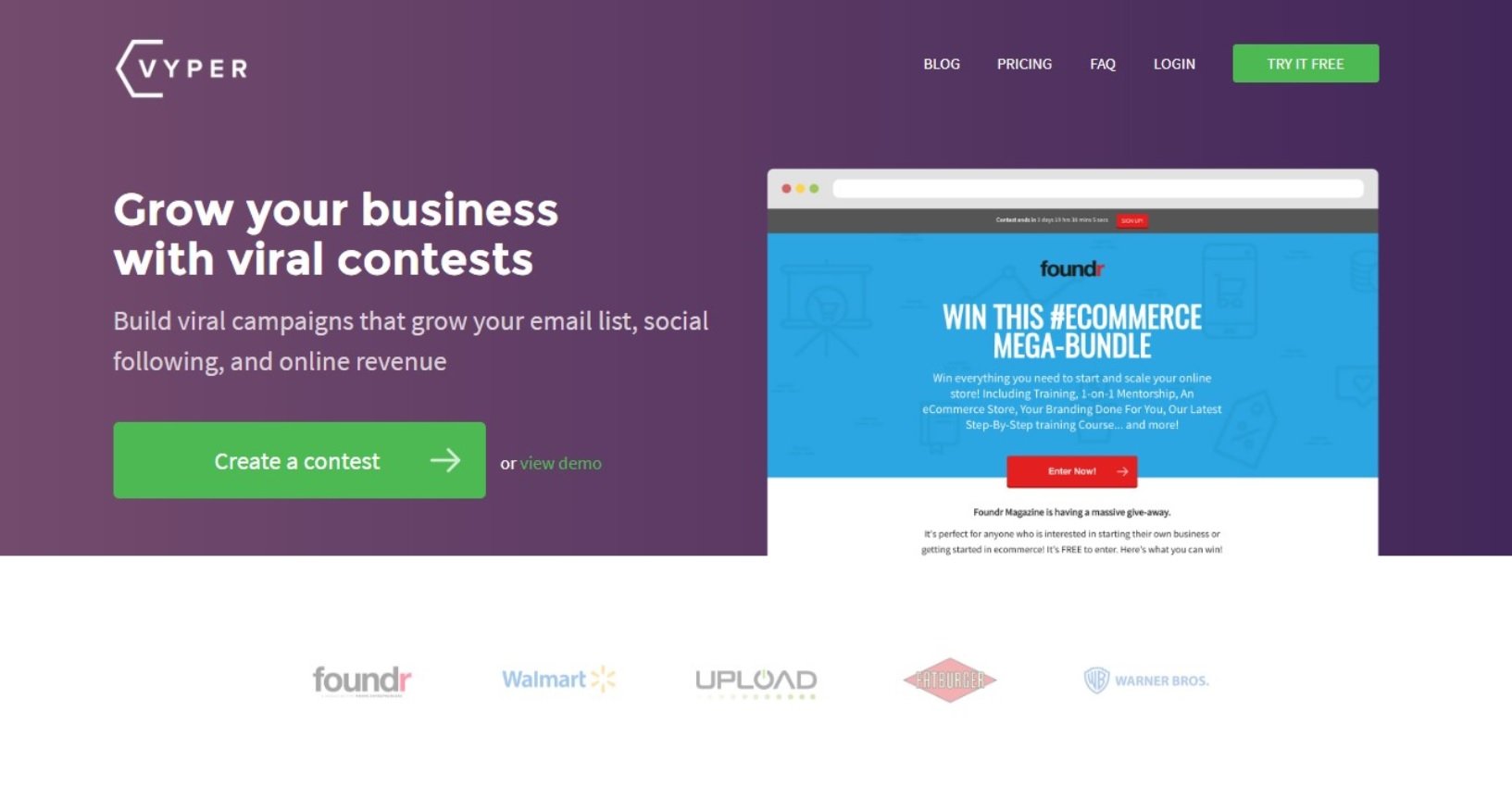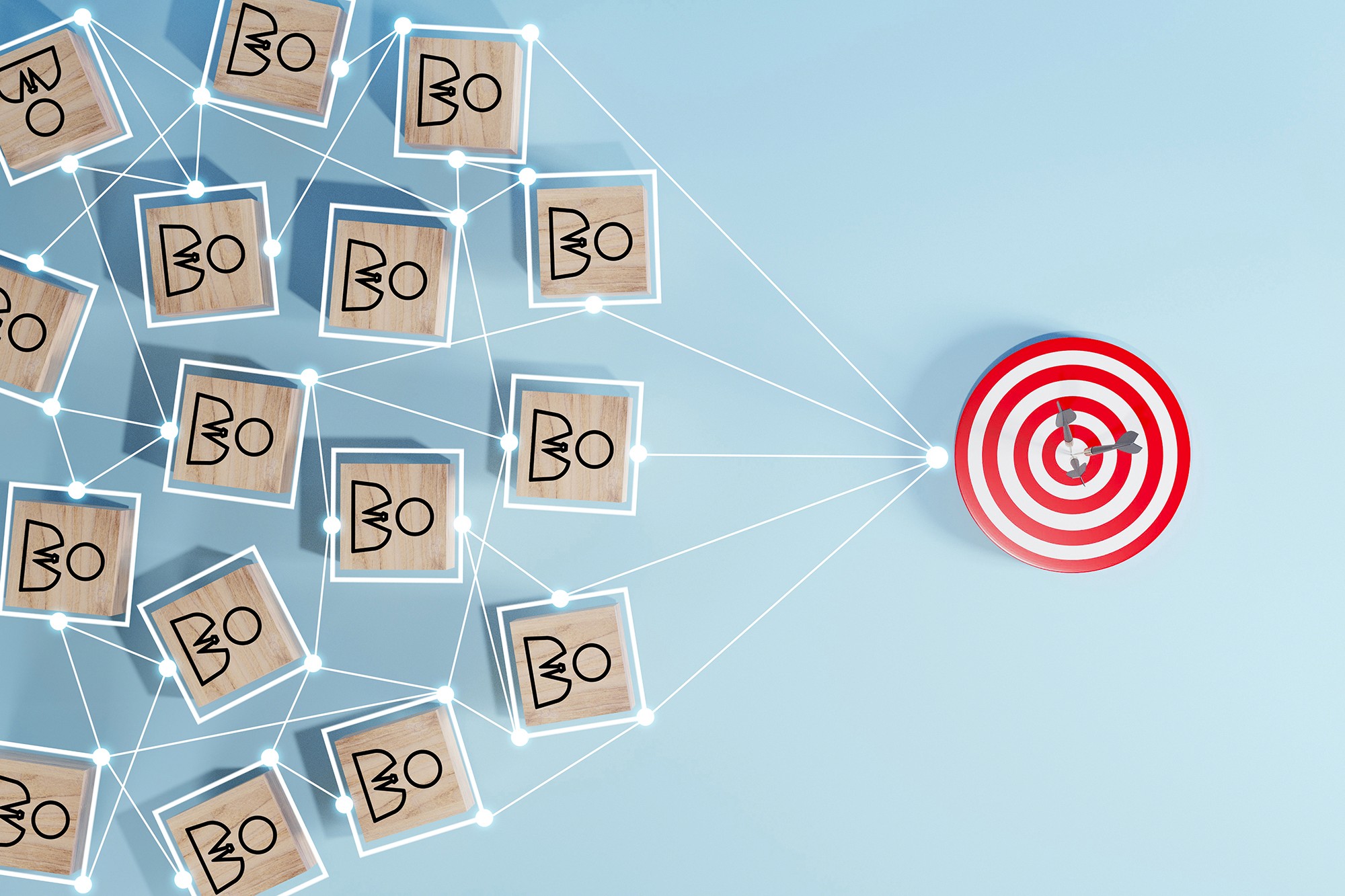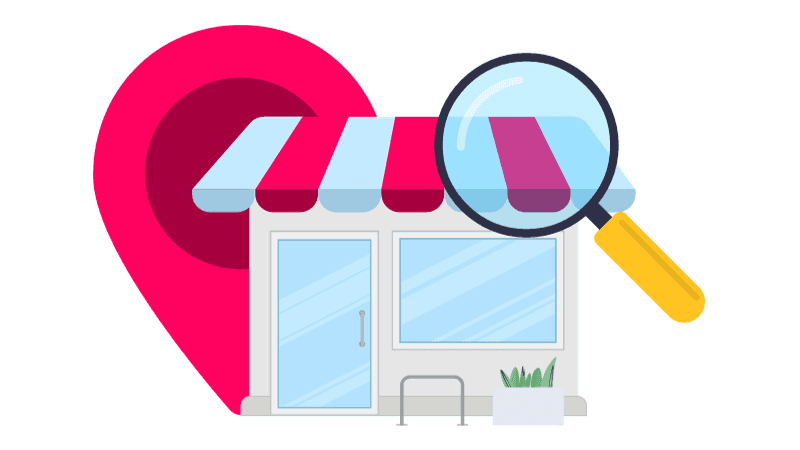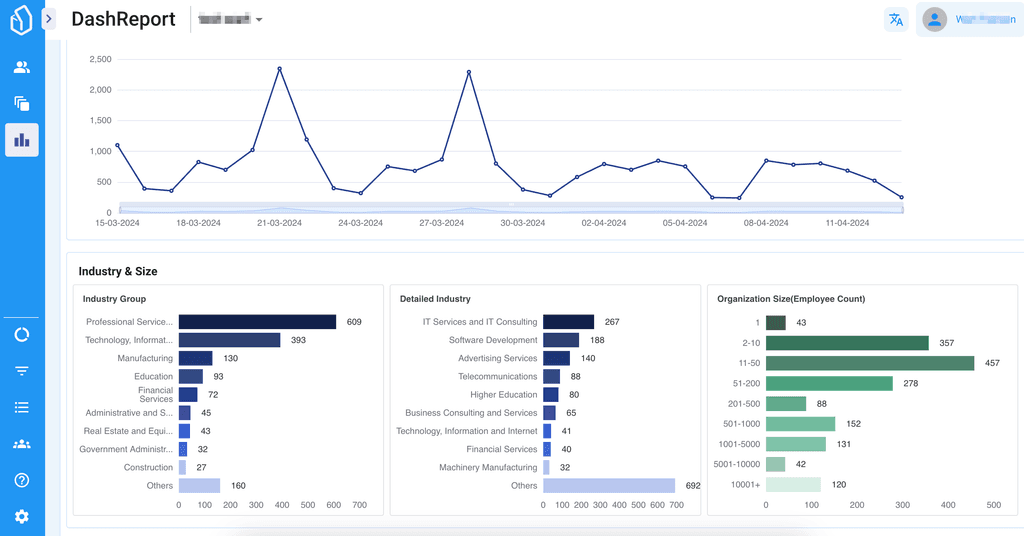
Lead Generation
Demand vs Lead Generation: Which One Do You Need?
Demand vs Lead Generation: Which One Do You Need?
2023-11-18

Lead Generation
Demand vs Lead Generation: Which One Do You Need?
2023-11-18

Lead Generation
Demand vs Lead Generation: Which One Do You Need?
2023-11-18
The difference between demand generation and lead generation can be confusing. Both share similar traits, however, the goals and specific tactics behind each method are different. Thus, having an understanding of both can help you to create a more effective marketing strategy.
In this post, we’ll define both demand and lead generation and how they differ from one another. We discuss specific tactics that each method uses. We discuss when to use demand generation vs. when to use lead generation. Let’s get to it:
The difference between demand generation and lead generation can be confusing. Both share similar traits, however, the goals and specific tactics behind each method are different. Thus, having an understanding of both can help you to create a more effective marketing strategy.
In this post, we’ll define both demand and lead generation and how they differ from one another. We discuss specific tactics that each method uses. We discuss when to use demand generation vs. when to use lead generation. Let’s get to it:
The difference between demand generation and lead generation can be confusing. Both share similar traits, however, the goals and specific tactics behind each method are different. Thus, having an understanding of both can help you to create a more effective marketing strategy.
In this post, we’ll define both demand and lead generation and how they differ from one another. We discuss specific tactics that each method uses. We discuss when to use demand generation vs. when to use lead generation. Let’s get to it:
The difference between demand generation and lead generation can be confusing. Both share similar traits, however, the goals and specific tactics behind each method are different. Thus, having an understanding of both can help you to create a more effective marketing strategy.
In this post, we’ll define both demand and lead generation and how they differ from one another. We discuss specific tactics that each method uses. We discuss when to use demand generation vs. when to use lead generation. Let’s get to it:
Table of Contents
Auto Generated TOC
Auto Generated TOC
Auto Generated TOC
Auto Generated TOC
What is Demand Generation?
Demand generation, or "demand gen," is the process of building awareness and interest in a company's product or service. In short, demand gen aims to bring new visitors to your website or business in order to introduce them to your company. The result is to build your target audience, establish trust, and to spark interest in your company. Types of demand generation content include:
Resource pages
Infographics
YouTube videos
Press releases
Slideshares
Podcasts and interviews
Free tools
Case studies
Your company provides all this content for “free” to attract new potential customers. At this stage, they shouldn’t have to provide their email or other contact information to access this content.
Demand Generation Ideas:
To get you started, here are a few demand generation ideas you can use:
Create SEO-Driven Content
One way to create awareness is to create content that your target audience is already searching for. There are many ways to identify keyword opportunities. For one, you can look at Google related searches. Simply search a keyword in Google and then scroll to the bottom of that page:
Here you will see a list of related keywords that people are searching for. You can also look at the types of questions people are asking in Quora or use a tool like Ahrefs for keyword research.
Guest Posts
Guest posting is the process of creating a blog post for another popular blog in your industry. This is a great way to reach your target audience and “piggy-back” off of the traffic that the established blog already receives.
Create Industry Expert Roundups
An expert roundup is a blog post where you gather quotes from experts in your industry on a particular topic that you know your target audience will enjoy. This type of content is often shared well. Not only that, contributors will typically share the blog post with their own social networks once it’s published.
One way to find experts in your industry is by Googling your chosen topic and finding people who have already written on the topic or have provided a quote. You can also use a tool like HARO to help to collect responses. For a great example of an expert roundup, check out our blog post, “19+ Lead Generation Tools from the Experts”.
Advertise on Industry Blogs
There are also ways to take advantage of sites that have established larger audience. You can run display ads, invest in sponsored posts, or buy sponsored email slots from industry blogs that your audience reads.
Run a Viral Contest

Create a fun contest where people can earn rewards. They can do this by referring friends, sharing on social media, or commenting on a post. This increases the likelihood that people will share the contest, making it a good way to raise awareness. Three options for running a viral contest include:
For more demand generation ideas, we recommend the following resources:
“8 Amazing Demand Generation Strategies to Boost Your Market Share” by Sprout Social
“Demand Generation 101: 7 Tactics For Generating High Quality Leads” by Act-On
“9 Killer Demand Generation Strategies for New Brands” by WordStream
What is Lead Generation?
Lead generation, or “lead gen” for short, is the process of converting potential customers into qualified leads (ie. someone who has a genuine interest in what you have to offer).
In short, lead gen is a way to funnel-in eventual purchasers of your product or service down the path of buying. The end result is to find qualified leads for your company so they can be added to a lead nurturing process for a salesperson can follow up.
Lead gen typically involves creating “gated” content and then asking for contact information to access that content. Types of lead generation content include:
Any type of gated content (such as an eBook, PDF, checklist, cheat sheet, whitepaper, etc.)
Courses
Free-Trials
Product Demos
Viral Contests (where someone needs to enter their email or other contact information to enter)
Email Subscriptions
Events
To access this content, a person must provide their email and other contact information the company wants to collect. To learn more, this guide breaks down the basics of lead generation and why it’s so important.
Lead Generation Ideas:
To get you started, here are a few lead generation ideas you can use:
Create an eBook
If you have yet to create any type of lead magnet on your site, an eBook is a good one to start with. Most eBooks tackle a broad topic in your industry, thus you can promote it across multiple blog posts on your site.
Create a Content Upgrade
A content upgrade is another type of lead magnet designed to entice people to enter their email and/or other contact information in exchange for the content upgrade. Instead of an eBook, which is usually more general, a content upgrade is specific to a certain blog post. This increases the conversion rate of signups since the content is more closely related to the blog post the person is reading. Examples of a content upgrade might include:
A PDF version of that same blog post
A checklist
Step-by-step instructions
A cheat sheet
Host a Webinar
Hosting a webinar with industry experts is a great way to gather contact information. You can require your audience to sign up in advance. Software such as WebinarJam and Demio can help you get this set up.
Use a Lead Data PlatformCollecting contact information from potential leads through lead magnets and webinars is a good way to generate leads. However, sometimes you need to take action yourself. Not everyone is willing to fork over their email or phone number. This is when a direct outreach approach can be helpful.
For people who don’t submit contact information but still might be qualified leads, a lead data platform like LeadBoxer can help you to identify these people and find their contact information so you can reach out directly. For more lead generation ideas, we recommend the following resources:
“13 Amazing Lead Generation Ideas That Work” - by LeadBoxer
“7 Creative Lead Generation Ideas That Work” - by Digital Marketing Institute
“12 Lead Generation Ideas to Attract Qualified Prospects in 2018” - by Outbrain
What’s the Difference Between Lead Generation and Demand Generation?
Lead generation is a subset of demand generation. Demand generation helps create awareness and attract new customers to your business. Lead generation qualifies these people as "leads." It prepares them for the next step in your marketing or sales process.
A simple way to understand the differences is to look at the different types of content each method uses. Demand generation uses free content like blog posts, articles, and videos. This helps create awareness and attract your target audience.
Lead generation content is typically “gated.” A person must give their email or other contact information to get that content, like a PDF or checklist.
This allows sales and marketing to continue the relationship and nudge that person towards a purchase. You don’t need to choose one or the other. Both lead gen and demand gen can be used effectively within your overall marketing strategy.
When creating content, you want to consider the goal behind that piece of content. Is the goal to generate awareness or to increase leads?
For example, if you create an eBook and the goal is to generate awareness, this is demand generation. To get the best results, people should be able to download the eBook for free. They should not have to provide any contact information.
This will make it easier for people to share it with their friends and colleagues. However, if the goal is to find qualified leads, you should gate that piece of contact in lead generation. As you can hopefully see, it’s nearly impossible to go with one without the other.
An effective marketing strategy will include both lead generation and demand generation. Companies use demand generation to attract new customers, and they use lead generation to identify qualified leads.
What is Demand Generation?
Demand generation, or "demand gen," is the process of building awareness and interest in a company's product or service. In short, demand gen aims to bring new visitors to your website or business in order to introduce them to your company. The result is to build your target audience, establish trust, and to spark interest in your company. Types of demand generation content include:
Resource pages
Infographics
YouTube videos
Press releases
Slideshares
Podcasts and interviews
Free tools
Case studies
Your company provides all this content for “free” to attract new potential customers. At this stage, they shouldn’t have to provide their email or other contact information to access this content.
Demand Generation Ideas:
To get you started, here are a few demand generation ideas you can use:
Create SEO-Driven Content
One way to create awareness is to create content that your target audience is already searching for. There are many ways to identify keyword opportunities. For one, you can look at Google related searches. Simply search a keyword in Google and then scroll to the bottom of that page:
Here you will see a list of related keywords that people are searching for. You can also look at the types of questions people are asking in Quora or use a tool like Ahrefs for keyword research.
Guest Posts
Guest posting is the process of creating a blog post for another popular blog in your industry. This is a great way to reach your target audience and “piggy-back” off of the traffic that the established blog already receives.
Create Industry Expert Roundups
An expert roundup is a blog post where you gather quotes from experts in your industry on a particular topic that you know your target audience will enjoy. This type of content is often shared well. Not only that, contributors will typically share the blog post with their own social networks once it’s published.
One way to find experts in your industry is by Googling your chosen topic and finding people who have already written on the topic or have provided a quote. You can also use a tool like HARO to help to collect responses. For a great example of an expert roundup, check out our blog post, “19+ Lead Generation Tools from the Experts”.
Advertise on Industry Blogs
There are also ways to take advantage of sites that have established larger audience. You can run display ads, invest in sponsored posts, or buy sponsored email slots from industry blogs that your audience reads.
Run a Viral Contest

Create a fun contest where people can earn rewards. They can do this by referring friends, sharing on social media, or commenting on a post. This increases the likelihood that people will share the contest, making it a good way to raise awareness. Three options for running a viral contest include:
For more demand generation ideas, we recommend the following resources:
“8 Amazing Demand Generation Strategies to Boost Your Market Share” by Sprout Social
“Demand Generation 101: 7 Tactics For Generating High Quality Leads” by Act-On
“9 Killer Demand Generation Strategies for New Brands” by WordStream
What is Lead Generation?
Lead generation, or “lead gen” for short, is the process of converting potential customers into qualified leads (ie. someone who has a genuine interest in what you have to offer).
In short, lead gen is a way to funnel-in eventual purchasers of your product or service down the path of buying. The end result is to find qualified leads for your company so they can be added to a lead nurturing process for a salesperson can follow up.
Lead gen typically involves creating “gated” content and then asking for contact information to access that content. Types of lead generation content include:
Any type of gated content (such as an eBook, PDF, checklist, cheat sheet, whitepaper, etc.)
Courses
Free-Trials
Product Demos
Viral Contests (where someone needs to enter their email or other contact information to enter)
Email Subscriptions
Events
To access this content, a person must provide their email and other contact information the company wants to collect. To learn more, this guide breaks down the basics of lead generation and why it’s so important.
Lead Generation Ideas:
To get you started, here are a few lead generation ideas you can use:
Create an eBook
If you have yet to create any type of lead magnet on your site, an eBook is a good one to start with. Most eBooks tackle a broad topic in your industry, thus you can promote it across multiple blog posts on your site.
Create a Content Upgrade
A content upgrade is another type of lead magnet designed to entice people to enter their email and/or other contact information in exchange for the content upgrade. Instead of an eBook, which is usually more general, a content upgrade is specific to a certain blog post. This increases the conversion rate of signups since the content is more closely related to the blog post the person is reading. Examples of a content upgrade might include:
A PDF version of that same blog post
A checklist
Step-by-step instructions
A cheat sheet
Host a Webinar
Hosting a webinar with industry experts is a great way to gather contact information. You can require your audience to sign up in advance. Software such as WebinarJam and Demio can help you get this set up.
Use a Lead Data PlatformCollecting contact information from potential leads through lead magnets and webinars is a good way to generate leads. However, sometimes you need to take action yourself. Not everyone is willing to fork over their email or phone number. This is when a direct outreach approach can be helpful.
For people who don’t submit contact information but still might be qualified leads, a lead data platform like LeadBoxer can help you to identify these people and find their contact information so you can reach out directly. For more lead generation ideas, we recommend the following resources:
“13 Amazing Lead Generation Ideas That Work” - by LeadBoxer
“7 Creative Lead Generation Ideas That Work” - by Digital Marketing Institute
“12 Lead Generation Ideas to Attract Qualified Prospects in 2018” - by Outbrain
What’s the Difference Between Lead Generation and Demand Generation?
Lead generation is a subset of demand generation. Demand generation helps create awareness and attract new customers to your business. Lead generation qualifies these people as "leads." It prepares them for the next step in your marketing or sales process.
A simple way to understand the differences is to look at the different types of content each method uses. Demand generation uses free content like blog posts, articles, and videos. This helps create awareness and attract your target audience.
Lead generation content is typically “gated.” A person must give their email or other contact information to get that content, like a PDF or checklist.
This allows sales and marketing to continue the relationship and nudge that person towards a purchase. You don’t need to choose one or the other. Both lead gen and demand gen can be used effectively within your overall marketing strategy.
When creating content, you want to consider the goal behind that piece of content. Is the goal to generate awareness or to increase leads?
For example, if you create an eBook and the goal is to generate awareness, this is demand generation. To get the best results, people should be able to download the eBook for free. They should not have to provide any contact information.
This will make it easier for people to share it with their friends and colleagues. However, if the goal is to find qualified leads, you should gate that piece of contact in lead generation. As you can hopefully see, it’s nearly impossible to go with one without the other.
An effective marketing strategy will include both lead generation and demand generation. Companies use demand generation to attract new customers, and they use lead generation to identify qualified leads.
What is Demand Generation?
Demand generation, or "demand gen," is the process of building awareness and interest in a company's product or service. In short, demand gen aims to bring new visitors to your website or business in order to introduce them to your company. The result is to build your target audience, establish trust, and to spark interest in your company. Types of demand generation content include:
Resource pages
Infographics
YouTube videos
Press releases
Slideshares
Podcasts and interviews
Free tools
Case studies
Your company provides all this content for “free” to attract new potential customers. At this stage, they shouldn’t have to provide their email or other contact information to access this content.
Demand Generation Ideas:
To get you started, here are a few demand generation ideas you can use:
Create SEO-Driven Content
One way to create awareness is to create content that your target audience is already searching for. There are many ways to identify keyword opportunities. For one, you can look at Google related searches. Simply search a keyword in Google and then scroll to the bottom of that page:
Here you will see a list of related keywords that people are searching for. You can also look at the types of questions people are asking in Quora or use a tool like Ahrefs for keyword research.
Guest Posts
Guest posting is the process of creating a blog post for another popular blog in your industry. This is a great way to reach your target audience and “piggy-back” off of the traffic that the established blog already receives.
Create Industry Expert Roundups
An expert roundup is a blog post where you gather quotes from experts in your industry on a particular topic that you know your target audience will enjoy. This type of content is often shared well. Not only that, contributors will typically share the blog post with their own social networks once it’s published.
One way to find experts in your industry is by Googling your chosen topic and finding people who have already written on the topic or have provided a quote. You can also use a tool like HARO to help to collect responses. For a great example of an expert roundup, check out our blog post, “19+ Lead Generation Tools from the Experts”.
Advertise on Industry Blogs
There are also ways to take advantage of sites that have established larger audience. You can run display ads, invest in sponsored posts, or buy sponsored email slots from industry blogs that your audience reads.
Run a Viral Contest

Create a fun contest where people can earn rewards. They can do this by referring friends, sharing on social media, or commenting on a post. This increases the likelihood that people will share the contest, making it a good way to raise awareness. Three options for running a viral contest include:
For more demand generation ideas, we recommend the following resources:
“8 Amazing Demand Generation Strategies to Boost Your Market Share” by Sprout Social
“Demand Generation 101: 7 Tactics For Generating High Quality Leads” by Act-On
“9 Killer Demand Generation Strategies for New Brands” by WordStream
What is Lead Generation?
Lead generation, or “lead gen” for short, is the process of converting potential customers into qualified leads (ie. someone who has a genuine interest in what you have to offer).
In short, lead gen is a way to funnel-in eventual purchasers of your product or service down the path of buying. The end result is to find qualified leads for your company so they can be added to a lead nurturing process for a salesperson can follow up.
Lead gen typically involves creating “gated” content and then asking for contact information to access that content. Types of lead generation content include:
Any type of gated content (such as an eBook, PDF, checklist, cheat sheet, whitepaper, etc.)
Courses
Free-Trials
Product Demos
Viral Contests (where someone needs to enter their email or other contact information to enter)
Email Subscriptions
Events
To access this content, a person must provide their email and other contact information the company wants to collect. To learn more, this guide breaks down the basics of lead generation and why it’s so important.
Lead Generation Ideas:
To get you started, here are a few lead generation ideas you can use:
Create an eBook
If you have yet to create any type of lead magnet on your site, an eBook is a good one to start with. Most eBooks tackle a broad topic in your industry, thus you can promote it across multiple blog posts on your site.
Create a Content Upgrade
A content upgrade is another type of lead magnet designed to entice people to enter their email and/or other contact information in exchange for the content upgrade. Instead of an eBook, which is usually more general, a content upgrade is specific to a certain blog post. This increases the conversion rate of signups since the content is more closely related to the blog post the person is reading. Examples of a content upgrade might include:
A PDF version of that same blog post
A checklist
Step-by-step instructions
A cheat sheet
Host a Webinar
Hosting a webinar with industry experts is a great way to gather contact information. You can require your audience to sign up in advance. Software such as WebinarJam and Demio can help you get this set up.
Use a Lead Data PlatformCollecting contact information from potential leads through lead magnets and webinars is a good way to generate leads. However, sometimes you need to take action yourself. Not everyone is willing to fork over their email or phone number. This is when a direct outreach approach can be helpful.
For people who don’t submit contact information but still might be qualified leads, a lead data platform like LeadBoxer can help you to identify these people and find their contact information so you can reach out directly. For more lead generation ideas, we recommend the following resources:
“13 Amazing Lead Generation Ideas That Work” - by LeadBoxer
“7 Creative Lead Generation Ideas That Work” - by Digital Marketing Institute
“12 Lead Generation Ideas to Attract Qualified Prospects in 2018” - by Outbrain
What’s the Difference Between Lead Generation and Demand Generation?
Lead generation is a subset of demand generation. Demand generation helps create awareness and attract new customers to your business. Lead generation qualifies these people as "leads." It prepares them for the next step in your marketing or sales process.
A simple way to understand the differences is to look at the different types of content each method uses. Demand generation uses free content like blog posts, articles, and videos. This helps create awareness and attract your target audience.
Lead generation content is typically “gated.” A person must give their email or other contact information to get that content, like a PDF or checklist.
This allows sales and marketing to continue the relationship and nudge that person towards a purchase. You don’t need to choose one or the other. Both lead gen and demand gen can be used effectively within your overall marketing strategy.
When creating content, you want to consider the goal behind that piece of content. Is the goal to generate awareness or to increase leads?
For example, if you create an eBook and the goal is to generate awareness, this is demand generation. To get the best results, people should be able to download the eBook for free. They should not have to provide any contact information.
This will make it easier for people to share it with their friends and colleagues. However, if the goal is to find qualified leads, you should gate that piece of contact in lead generation. As you can hopefully see, it’s nearly impossible to go with one without the other.
An effective marketing strategy will include both lead generation and demand generation. Companies use demand generation to attract new customers, and they use lead generation to identify qualified leads.
What is Demand Generation?
Demand generation, or "demand gen," is the process of building awareness and interest in a company's product or service. In short, demand gen aims to bring new visitors to your website or business in order to introduce them to your company. The result is to build your target audience, establish trust, and to spark interest in your company. Types of demand generation content include:
Resource pages
Infographics
YouTube videos
Press releases
Slideshares
Podcasts and interviews
Free tools
Case studies
Your company provides all this content for “free” to attract new potential customers. At this stage, they shouldn’t have to provide their email or other contact information to access this content.
Demand Generation Ideas:
To get you started, here are a few demand generation ideas you can use:
Create SEO-Driven Content
One way to create awareness is to create content that your target audience is already searching for. There are many ways to identify keyword opportunities. For one, you can look at Google related searches. Simply search a keyword in Google and then scroll to the bottom of that page:
Here you will see a list of related keywords that people are searching for. You can also look at the types of questions people are asking in Quora or use a tool like Ahrefs for keyword research.
Guest Posts
Guest posting is the process of creating a blog post for another popular blog in your industry. This is a great way to reach your target audience and “piggy-back” off of the traffic that the established blog already receives.
Create Industry Expert Roundups
An expert roundup is a blog post where you gather quotes from experts in your industry on a particular topic that you know your target audience will enjoy. This type of content is often shared well. Not only that, contributors will typically share the blog post with their own social networks once it’s published.
One way to find experts in your industry is by Googling your chosen topic and finding people who have already written on the topic or have provided a quote. You can also use a tool like HARO to help to collect responses. For a great example of an expert roundup, check out our blog post, “19+ Lead Generation Tools from the Experts”.
Advertise on Industry Blogs
There are also ways to take advantage of sites that have established larger audience. You can run display ads, invest in sponsored posts, or buy sponsored email slots from industry blogs that your audience reads.
Run a Viral Contest

Create a fun contest where people can earn rewards. They can do this by referring friends, sharing on social media, or commenting on a post. This increases the likelihood that people will share the contest, making it a good way to raise awareness. Three options for running a viral contest include:
For more demand generation ideas, we recommend the following resources:
“8 Amazing Demand Generation Strategies to Boost Your Market Share” by Sprout Social
“Demand Generation 101: 7 Tactics For Generating High Quality Leads” by Act-On
“9 Killer Demand Generation Strategies for New Brands” by WordStream
What is Lead Generation?
Lead generation, or “lead gen” for short, is the process of converting potential customers into qualified leads (ie. someone who has a genuine interest in what you have to offer).
In short, lead gen is a way to funnel-in eventual purchasers of your product or service down the path of buying. The end result is to find qualified leads for your company so they can be added to a lead nurturing process for a salesperson can follow up.
Lead gen typically involves creating “gated” content and then asking for contact information to access that content. Types of lead generation content include:
Any type of gated content (such as an eBook, PDF, checklist, cheat sheet, whitepaper, etc.)
Courses
Free-Trials
Product Demos
Viral Contests (where someone needs to enter their email or other contact information to enter)
Email Subscriptions
Events
To access this content, a person must provide their email and other contact information the company wants to collect. To learn more, this guide breaks down the basics of lead generation and why it’s so important.
Lead Generation Ideas:
To get you started, here are a few lead generation ideas you can use:
Create an eBook
If you have yet to create any type of lead magnet on your site, an eBook is a good one to start with. Most eBooks tackle a broad topic in your industry, thus you can promote it across multiple blog posts on your site.
Create a Content Upgrade
A content upgrade is another type of lead magnet designed to entice people to enter their email and/or other contact information in exchange for the content upgrade. Instead of an eBook, which is usually more general, a content upgrade is specific to a certain blog post. This increases the conversion rate of signups since the content is more closely related to the blog post the person is reading. Examples of a content upgrade might include:
A PDF version of that same blog post
A checklist
Step-by-step instructions
A cheat sheet
Host a Webinar
Hosting a webinar with industry experts is a great way to gather contact information. You can require your audience to sign up in advance. Software such as WebinarJam and Demio can help you get this set up.
Use a Lead Data PlatformCollecting contact information from potential leads through lead magnets and webinars is a good way to generate leads. However, sometimes you need to take action yourself. Not everyone is willing to fork over their email or phone number. This is when a direct outreach approach can be helpful.
For people who don’t submit contact information but still might be qualified leads, a lead data platform like LeadBoxer can help you to identify these people and find their contact information so you can reach out directly. For more lead generation ideas, we recommend the following resources:
“13 Amazing Lead Generation Ideas That Work” - by LeadBoxer
“7 Creative Lead Generation Ideas That Work” - by Digital Marketing Institute
“12 Lead Generation Ideas to Attract Qualified Prospects in 2018” - by Outbrain
What’s the Difference Between Lead Generation and Demand Generation?
Lead generation is a subset of demand generation. Demand generation helps create awareness and attract new customers to your business. Lead generation qualifies these people as "leads." It prepares them for the next step in your marketing or sales process.
A simple way to understand the differences is to look at the different types of content each method uses. Demand generation uses free content like blog posts, articles, and videos. This helps create awareness and attract your target audience.
Lead generation content is typically “gated.” A person must give their email or other contact information to get that content, like a PDF or checklist.
This allows sales and marketing to continue the relationship and nudge that person towards a purchase. You don’t need to choose one or the other. Both lead gen and demand gen can be used effectively within your overall marketing strategy.
When creating content, you want to consider the goal behind that piece of content. Is the goal to generate awareness or to increase leads?
For example, if you create an eBook and the goal is to generate awareness, this is demand generation. To get the best results, people should be able to download the eBook for free. They should not have to provide any contact information.
This will make it easier for people to share it with their friends and colleagues. However, if the goal is to find qualified leads, you should gate that piece of contact in lead generation. As you can hopefully see, it’s nearly impossible to go with one without the other.
An effective marketing strategy will include both lead generation and demand generation. Companies use demand generation to attract new customers, and they use lead generation to identify qualified leads.

Generate More Qualified Leads with LeadBoxer
Create a (free) account or get a demo and find out how we can help you.

Generate More Qualified Leads with LeadBoxer
Create a (free) account or get a demo and find out how we can help you.

Generate More Qualified Leads with LeadBoxer
Create a (free) account or get a demo and find out how we can help you.

Generate More Qualified Leads with LeadBoxer
Create a (free) account or get a demo and find out how we can help you.
Get Started with LeadBoxer
LeadBoxer can help you quickly generate more leads
Get more insight into your online audience and their behaviour, and turn this data into actual opportunities.
Start Now!
Get Started with LeadBoxer
LeadBoxer can help you quickly generate more leads
Get more insight into your online audience and their behaviour, and turn this data into actual opportunities.
Start Now!
Get Started with LeadBoxer
LeadBoxer can help you quickly generate more leads
Get more insight into your online audience and their behaviour, and turn this data into actual opportunities.
Start Now!
Get Started with LeadBoxer
LeadBoxer can help you quickly generate more leads
Get more insight into your online audience and their behaviour, and turn this data into actual opportunities.
Start Now!
Other content in category
Lead Generation



Improved Lead Targeting Through Data-Driven Segmentation



Warm Leads Explained: What They Are and How to Use Them



Digital Lead Investing: Definition, Myths, Steps, and Strategies



5 Steps To Start Local Lead Generation For Your Business



How Do You Develop an Effective Content Distribution Strategy

Supercharge your marketing results with LeadBoxer!
Analyze campaigns and traffic, segement by industry, drilldown on company size and filter by location. See your Top pages, top accounts, and many other metrics.


Supercharge your marketing results with LeadBoxer!
Analyze campaigns and traffic, segement by industry, drilldown on company size and filter by location. See your Top pages, top accounts, and many other metrics.


Supercharge your marketing results with LeadBoxer!
Analyze campaigns and traffic, segement by industry, drilldown on company size and filter by location. See your Top pages, top accounts, and many other metrics.


Supercharge your marketing results with LeadBoxer!
Analyze campaigns and traffic, segement by industry, drilldown on company size and filter by location. See your Top pages, top accounts, and many other metrics.


